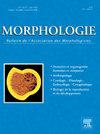n -乙酰半胱氨酸和柚皮苷在铅诱导的神经毒性中的神经保护作用比较:BDNF、神经递质和认知功能的恢复
Q3 Medicine
引用次数: 0
摘要
据报道,暴露于醋酸铅可诱导与认知功能障碍、神经递质功能障碍、氧化应激、神经炎症和海马神经元损伤相关的神经毒性。类黄酮和其他具有抗氧化和神经保护特性的天然化合物可用于治疗。本研究比较了柚皮苷作为类黄酮与n -乙酰半胱氨酸(NAC)对铅致大鼠神经毒性的保护作用。方法将成年大鼠随机分为对照组、醋酸铅处理组、铅+ nac处理组、铅+低剂量柚皮苷组和铅+高剂量柚皮苷组,每组6只。新目标识别(NOR)测试用于评估认知功能。生化分析海马谷氨酸、乙酰胆碱、脑源性神经营养因子(BDNF)、核因子-红细胞2相关因子2 (Nrf2)、促炎标志物(IL-6、GFAP)和血清铅水平。结晶紫染色对海马切片进行组织病理学分析。结果暴露于醋酸铅诱导了严重的神经毒性,表现为识别记忆受损,谷氨酸和乙酰胆碱含量降低,BDNF和Nrf2表达降低,IL-6和GFAP含量升高,海马神经元严重损伤。NAC治疗有效地逆转了认知功能、神经递质含量、神经营养因子,并减轻了神经炎症。柚皮苷具有剂量依赖性的神经保护作用,高剂量组在各项指标上的恢复优于低剂量组。有趣的是,高剂量柚皮苷的神经保护作用与NAC相似,甚至大于NAC对海马组织结构的正常化,抗氧化防御的增强,促炎标志物和血清铅水平的降低。结论醋酸铅对认知、神经传递、氧化应激和炎症具有较强的神经毒性。柚皮苷,特别是在高剂量时,表现出高度有效的神经保护作用,如NAC,通过显示抗氧化、抗炎和神经营养作用,预防铅诱导的认知功能障碍和海马病理。结果表明柚皮苷是预防和/或治疗铅致神经毒性的潜在天然候选药物。本文章由计算机程序翻译,如有差异,请以英文原文为准。
Comparative neuroprotective efficacy of N-acetylcysteine and naringin in lead-induced neurotoxicity: Restoration of BDNF, neurotransmitters, and cognitive function
Background
Exposure to lead acetate is reported to induce neurotoxicity associated with cognitive dysfunction, neurotransmitter dysfunction, oxidative stress, neuroinflammation, and neuronal damage in the hippocampus. Flavonoids and other natural compounds possessing antioxidant and neuroprotective properties can be of therapeutic interest. In the current study, naringin's protective property as a flavonoid was compared with that of N-acetylcysteine (NAC) against lead-induced neurotoxicity in rats.
Methods
Adult rats were randomly distributed into control, lead acetate-treated, lead + NAC-treated, lead + low-dose naringin, and lead + high-dose naringin groups, each group containing 6 animals. The Novel Object Recognition (NOR) test was used for the evaluation of cognitive function. Biochemical analysis of hippocampal glutamate, acetylcholine, Brain-Derived Neurotrophic Factor (BDNF), Nuclear factor erythroid 2-related factor 2 (Nrf2), pro-inflammatory markers (IL-6, GFAP), and serum lead levels was done. Histopathological analysis of hippocampal sections by crystal violet staining was done.
Results
Exposure to lead acetate-induced severe neurotoxicity in the guise of compromised recognition memory, reduced glutamate and acetylcholine content, reduced BDNF and Nrf2 expression, increased IL-6 and GFAP content, and severe hippocampal neuronal damage. NAC treatment effectively reversed cognitive function, neurotransmitter content, neurotrophic factors, and diminished neuroinflammation. Dose-dependent neuroprotection was afforded by naringin, where the high-dose group had better recovery in all the parameters than the low-dose group. Interestingly, high-dose naringin was similar to or even larger than that of NAC's neuroprotection, normalization of hippocampal histoarchitecture, enhancement of antioxidant defense, and decrease in pro-inflammatory markers and serum lead levels.
Conclusion
Lead acetate causes profound neurotoxicity on cognition, neurotransmission, oxidative stress, and inflammation. Naringin, especially at high doses, exhibits highly potent neuroprotective effects, such as NAC, preventing lead-induced cognitive dysfunction and hippocampal pathology by displaying antioxidant, anti-inflammatory, and neurotrophic effects. The results propose naringin as a potential natural drug candidate for preventing and/or treating lead-induced neurotoxicity.
求助全文
通过发布文献求助,成功后即可免费获取论文全文。
去求助
来源期刊

Morphologie
Medicine-Anatomy
CiteScore
2.30
自引率
0.00%
发文量
150
审稿时长
25 days
期刊介绍:
Morphologie est une revue universitaire avec une ouverture médicale qui sa adresse aux enseignants, aux étudiants, aux chercheurs et aux cliniciens en anatomie et en morphologie. Vous y trouverez les développements les plus actuels de votre spécialité, en France comme a international. Le objectif de Morphologie est d?offrir des lectures privilégiées sous forme de revues générales, d?articles originaux, de mises au point didactiques et de revues de la littérature, qui permettront notamment aux enseignants de optimiser leurs cours et aux spécialistes d?enrichir leurs connaissances.
 求助内容:
求助内容: 应助结果提醒方式:
应助结果提醒方式:


